Los Llanos & back to the Cordillera.
This post comes from the gritty cowboy town of Algeciras. Located at a little over 1000 metres on the very edge of the Cordillera Oriental, it makes a suitable end point for this latest chapter, before we make our way fully out of the range and across the low valleys to the Cordillera Central and Tierradentro – our next destination.
This second part of our Los Llanos adventure through the department of Meta has been as rewarding as the first, but it’s perhaps been the contact with local people that’s made this section extra rewarding, rather than the riding and the landscapes, although they themselves make this a beautiful – if not challenging – place to ride and explore. We’ve come to realise though at the conclusion of the past 14 days in this region, that it’s a classic bike packing experience and highly recommended to round out a Colombian tour, or as a route in its own right.
The main feature of La Macarena was its pool halls – always busy with loud music, enthusiastic shouts and equally enthusiastic beer drinking.
Below, our digs for three nights in La Macarena, run by a friendly family and with a thermos of sugary tinto always available. We’d originally planned just a single day off but it seemed a shame to rush away from this unique spot.
On the edge of town a fortified base protects the entry to the airfield.
With its scissor-lift control tower. Our time here coincided with a memorial day held for victims of the hostilities that have run for decades in this region.
Some vintage aircraft mixed in with the military technology too. Aircraft buffs – is this a DC3?
Even La Macarena has cycling fans. In a country where the Grand Tour stars Quintana, Superman Lopez and Uran are household names, cycling seems to permeate all the layers of Colombian society from rich to poor. Everything stopped in Edgar’s (in the pink shirt) tienda when a race was on; one day the Tour of the Basque Country and the next the Paris-Roubaix.
Edgar had lived here for 17 years – through much of the toughest times for the town. He talked of many deaths, and a fearful few years. Looking around his shop at his generators, pumps and and farming hardware, he lamented ‘This equipment is all made in China. The only thing Colombia produces is coca’.
Most of the things to see and do here are based around the Rio Guayabero, but being wet season and with the river running high it wasn’t going to be possible to see some famous petroglyphs carved into a section of the river canyon. But on the northern bank of the river it’s possible to access another well known Serranía de la Macarena stream, Caño Cristalitos, as well as a mirador with great views of the surrounding landscape. There was also the mysterious Ciudad de Piedras (City of Rocks) about 40 kilometres upstream, which also sounded worth checking out.
We asked around town, but the one guide we spoke to sounded disinterested (it’s off season) and some boatmen we talked to at the river bank wanted an exorbitant amount to take us upriver: 250,000 COP (roughly NZ$125).
In the end it was Edgar who helped us out – introducing us to his wiry cycling friend William (Pollo) who was willing to help us navigate the various fincas we needed permission from to walk the tracks, and show us around.
Jose, who owns the finca at the base of the track that climbs up to Caño Cristalitos. Standing here in his own coca plantation (the law dictates that you can have 27 plants for your own use). Both Pollo and Jose had evidently worked in much bigger coca plantations over the years – plantations that provided the supply for industrial quantity cocaine production. Without cue, Pollo straddled one of the bushes and showed how they held it between their legs and used both hands to speedily rip the leaves off.
With Pollo we rode 6km to the river bank and crossed the Guayabero in José’s boat – which was set up on a cable to ferry-glide across the wide river. We then walked through jungle along the river’s edge and climbed up to El Mirador on the edge of the Serranía de la Macarena formation.
A beautiful view over the Guyabero looking north west upstream. With a lack of roads in this region, this river serves as a highway of sorts. There aren’t any other towns along its shores north of here – with only San Jose to the east – but many people live on small fincas, growing crops and fishing.
And looking south towards La Macarena and the Los Llanos plains which seem to stretch forever.
The gently titled sandstone formation of Serranía de la Macarena. The Rio Guayabero is just out of sight to the left.
The plant life of the sandstone upland is a mixture of unique plants and low growing forest – and is apparently one of the most biodiverse areas on earth. The soil is shallow over the bedrock and many plants are specially adapted to conditions here, which include the distinctive vellozia macarenensis – which has evolved to survive wild fires which frequently blaze in this region.
The next morning we left early and rode 40 kilometres northwest on rough dirt tracks and roads to Charco Casa de Piedra, on the way crossing the murky Rio Losada at Los Indios, via a typically sketched together roll-on roll-off ferry.
Rio Guayabero, just below the raudal (rapids) section – now we just had to get across to the other side. The plan was to try and find a local prepared to ferry us over. Coming down the hill to the river bank we’d seen two men in a canoe, but it moved downstream and vanished. We shouted across to a house visible on the other side, but to no avail. So we got back on the bikes and headed along a track on the river bank to explore. Pollo was just as in the dark as us – having never been here before.
We headed for a distant radio mast and found a small building in a clearing in the jungle. It was – believe it or not – a boarding school for young kids. Individual houses here are so far flung, the only dirt track at the perils of the weather, and public transport non-existent, so the easiest method is for children to stay at the school during the week (or possibly longer – I wasn’t sure).
We got a great reception though – the teacher gave us some juice and the kids gave us heaps of attention.
And from the riverbank below the school, Pollo managed to flag down the elusive canoe.
Some curious translations on the dormitories.
A man and his son took us to the other side of the river in their canoe, where their family lived in the barest of buildings. Their finca was at the entrance to the Ciudad de Piedras track, so they see a smattering of tourists during the main Caño Cristales season. We continued along the track to the rocks for a few kilometres, with the promise of lunch ready for our return, and the offer of a ride back down the river to La Macarena – perfect.
The ‘city’ itself is a large area of sandstone outcrops, eroded by wind and water into shapes resembling melted polystrene, it’s a fun maze to explore (and scramble around on of course). Sadly a fire had ravaged the surrounding plants, but the place still had a mysterious charm – out here in the middle of nowhere…
We found a shallow creek with warm pools of water to bathe in and lay around like lazy seals for a while on the warm sandstone, before biking the few kilometres back to the finca.
Where an amazing feast awaited us… we’d been expecting rice and patacones, but instead fresh battered river fish, with rice and patacones.
For just a few dollars we saved ourselves a hot and hilly 40km slog back to town too, and instead sped down the river in the family’s canoa. They were off to La Macarena to pick up more timber for their house – a 22km trip each way via the river.
It was a good wildlife spotting opportunity. Few people live right by the water’s edge and those who do are well spread out, so there were plenty of birds about – and loads of turtles. If we approached for a closer look they’d all scuttle for the security of the murky water.
Crocs too! We saw several big and small. The biggest the family from the finca reported seeing was five metres long. Not a place to go for a casual cool off in the river.
From La Macarena it was a two and a half day ride to the bustling town of San Vincente del Caguan. This leg’s less scenic than the ride from Vistahermosa (see last post) – with much of the plain devoted to farming and no backdrop of mountains, but only an hour or two out of La Macarena we saw two different types of monkey swinging wild in the trees.
Rickety bridges – hard to believe it’s the main road to San Vincente!
We had a late start out of town and stopped in the village of Laureles for the night, sleeping at this unlikely looking ‘unoffical’ hospedaje.
It was a family home – with a couple of spare rooms that they rent out when required. It cost 15,000 COP, or about NZ$7 each for a bed and dinner – a pretty good deal and there was even a mosquito net. Poverty is a big problem in this area, but people seem to get by with very little and plod on.
The village had no electricity, no running water and no sewage utilities. The kitchen and laundry wastewater from this house just ran into a shallow ditch in the yard and then out onto the street – like other houses there. Some families ran generators in the evening for lights, music and TV, but this family could not afford it – or even solar lights, as many families in this region use – so it was candles once the sun set.
This cutie was one of 10 children – although only four of them lived at the house. The father drove a collectivo (shared taxi service with a covered pickup) for a living.
We pushed on early the next morning for La Ye, riding through endless gently rolling hills, cleared land and stands of tall, tangled forest.
Just out of La Ye we were stopped for the first time at a military checkpoint. Our passports were taken and checked somewhere in the adjacent camp and then returned to us, and the encounter was procedural but fairly relaxed. When I asked for a photo – on the off chance – the CO agreed, and two of the soldiers happily obliged. Our experiences with police and military in Colombia have been surprisingly relaxed. We always wave or say hello when we pass them on the road and our greeting is usually reciprocated with a smile or a toot.
Our Suesca friend Leyla’s family had adopted a young boy from a finca in this region many years ago. That boy – Ferney – is now in his twenties and has lived for a year in New Zealand, where we first met Leyla. We met Ferney in Bogotá (he speaks fluent English) and he gave us some instructions to find his family in Los Llanos, just a small detour off our route to San Vicente. As we got further from La Ye, the outposts got smaller and the roads narrower.
But even out here there’s small tiendas carrying basic staples like crackers, cooking oil, rice, eggs toilet paper, soap and soft drinks.
After asking at a couple of small stores we eventually found a gate and muddy double track leading a few hundred metres across fields to the remote home of Ferney’s parents.
Ferney’s mum – Celia.
His dad – Reimundo.
And Fernando – a nephew who was helping out on the farm for a while, as Reimundo had hurt his shoulder.
They keep 36 chickens, for meat and eggs. The eggs are sold in La Ye, about 15 kilometres away, once a week.
… sheep and pigs too, with some super cute young lambs …
… and 22 cows – hand milked every morning.
It was interesting to the see their process: the calfs are separated from their mothers the previous day, but then released one-by-one in the milking shed to drink from their mother and get the flow of milk going for the hand milking. After just a few seconds of suckling, Reimundo would lasso the calf and tie it up separately. After milking’s finished (two hours) the cows and calfs graze together for the morning, before being separated.
The milk isn’t refrigerated. Most of it goes in aluminium urns for collection at the roadside and a small remainder is kept for making into a type of quesillo (a fresh, slightly chewy cheese).
The kitchen.
The drinking water supply – straight from the roof into milk urns. Water for washing came from the river via a pump (powered with a generator) once a day into a small header tank.
Two chickens had their necks pulled to cater for the special guests.
We spent a day at Reimundo and Celia’s home and then rode on, making San Vincente by evening after a 90km ride on sometimes rough rolling roads in 30 degree heat and steady winds. A tough day.
Closing in on San Vincente in the late afternoon – finally hills again as we approach the base of the Cordillera Oriental.
Colombia’s murals and street art are the best we’ve seen in Latin America – bringing colour, art, controversy and political statement to otherwise drab city walls. Through this region nascent peace is a constant theme.
Two more days got us through to the mountain town of Guayabal, the first on pavement to Puerto Amor and the the second spent climbing pretty much all day on dirt roads in steady rain that didn’t fully stop until after we reached town. This shot’s taken with the GoPro – a useful backup on wet days!
Evening comes to Guayabal.
A small group of soldiers were camped on the hill above town, keeping a relaxed guard over the place. I’d spoken to them briefly the previous evening while out taking photos and in the morning they dropped by the hospedaje, where we were packing to leave, to say goodbye.
The bus they’re standing in front of is a chiva – a local public transport that reminded us of the gaudy and equally noisy chicken busses of Guatemala. They’re open sided, and for large cargo it’s a quick job to pull out all of the seats.
More climbing through montaña, as they call the high elevation forest here, farmland and coffee plantations took us to a saddle and a highpoint of 2050 metres on the range, before dropping down to Balsillas.
Showery clag drifted about the hillsides as a rough road carried us across a high plateau towards a long valley that would funnel us, weaving and winding, down to Algeciras.
The hillsides dotted with improbably sited houses and patches of cultivated land.
And rickety bridges ravaged by the river.
To Algeciras, where we were greeted by a muggy heat and the raucousness of a drunken Sunday afternoon. The photos were taken on a considerably quieter Wednesday morning, after our return from a lightning one night trip to Bogota (8 hours by bus), to finally collect my 16-35mm lens which was being repaired. We left the bikes at a hospedaje in town, and from there have headed to Tierradentro – subject of the next post…
Do you enjoy our blog content? Find it useful? We love it when people shout us a beer or contribute to our ongoing expenses!
Creating content for this site – as much as we love it – is time consuming and adds to travel costs. Every little bit helps, and your contributions motivate us to work on more bicycle travel-related content. Up coming: camera kit and photography work flow.
Thanks to Biomaxa, Revelate Designs, Kathmandu, Hope Technology and Pureflow for supporting Alaska to Argentina.









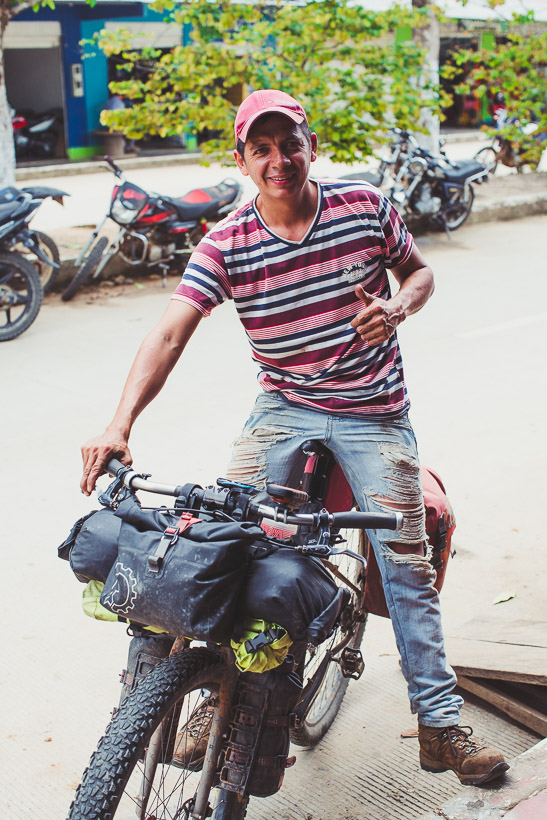



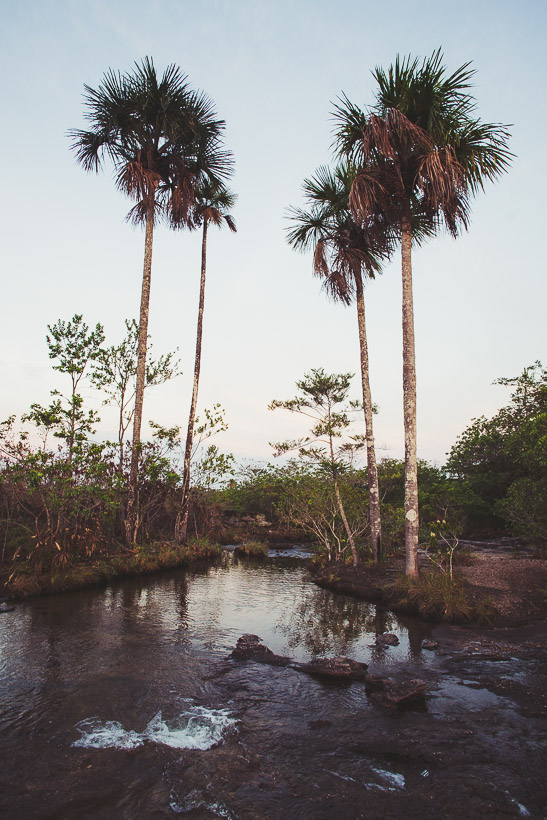




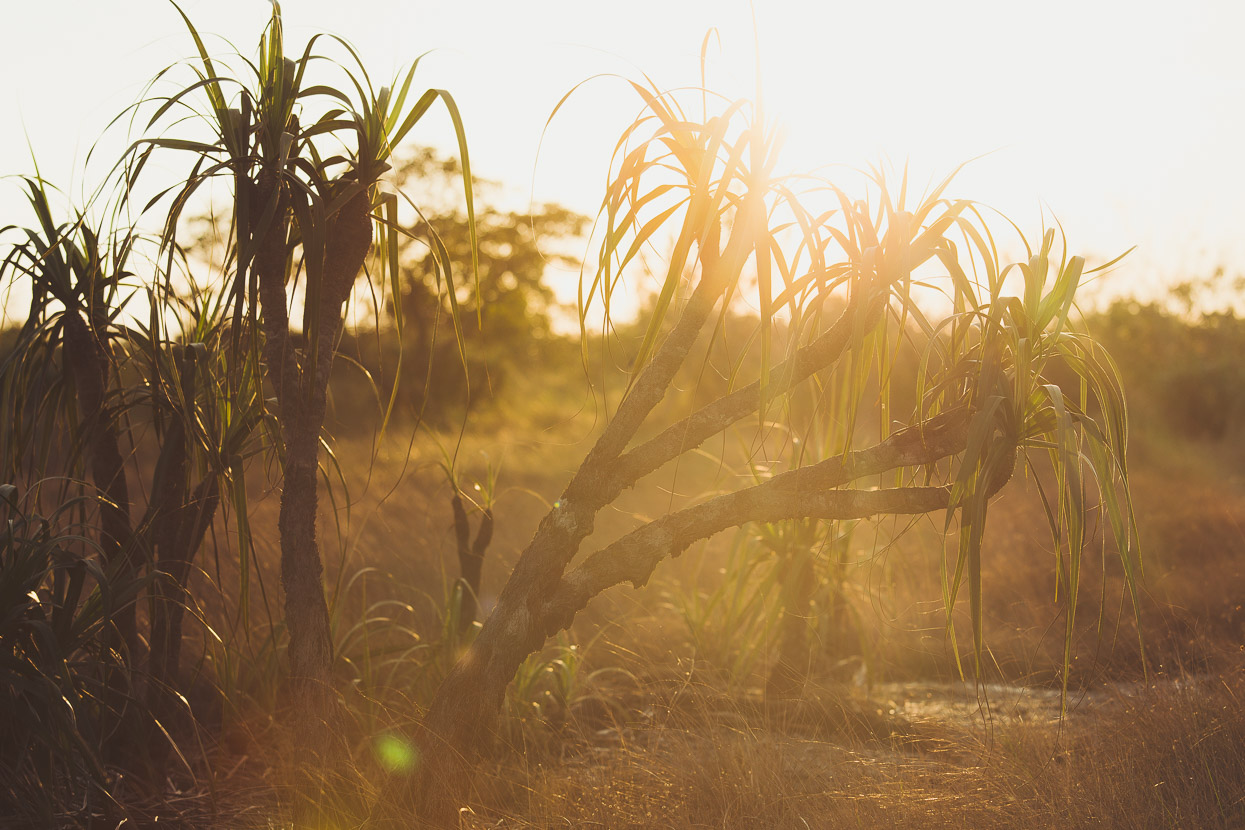





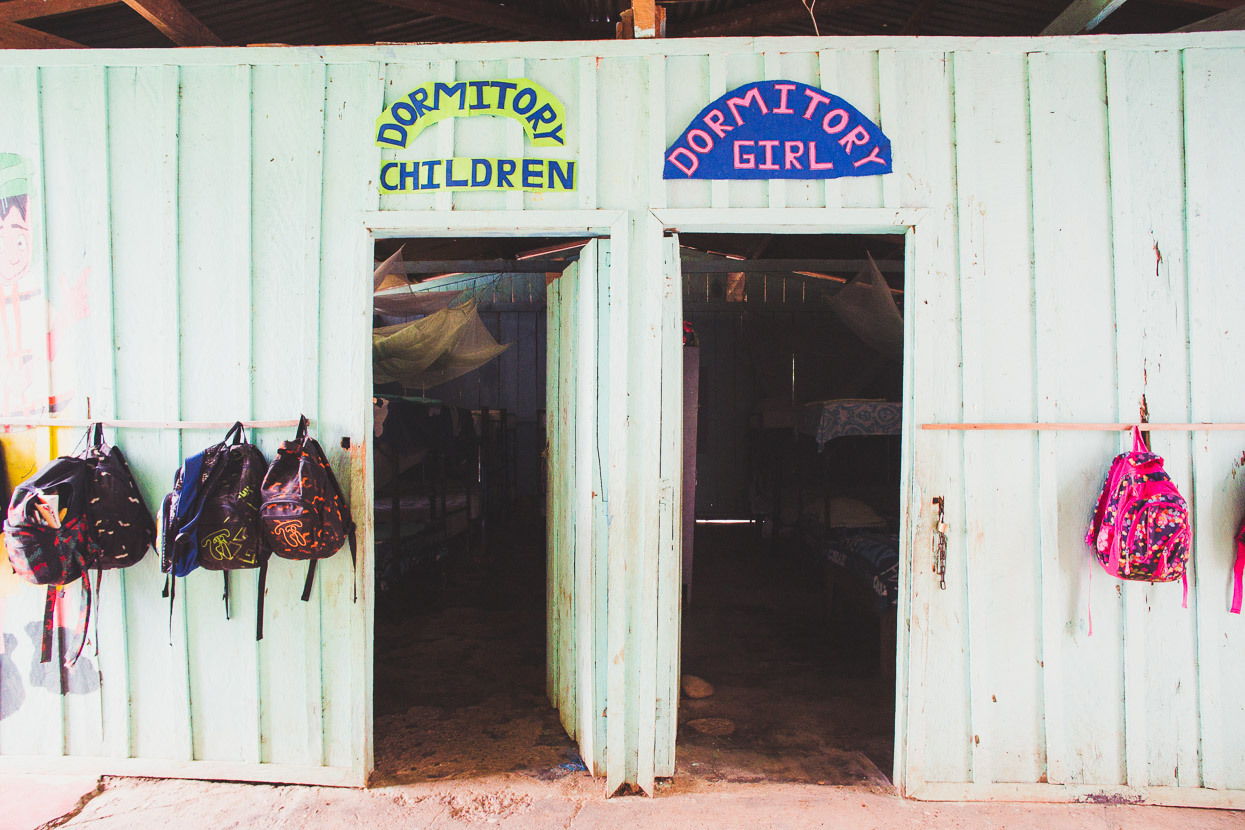


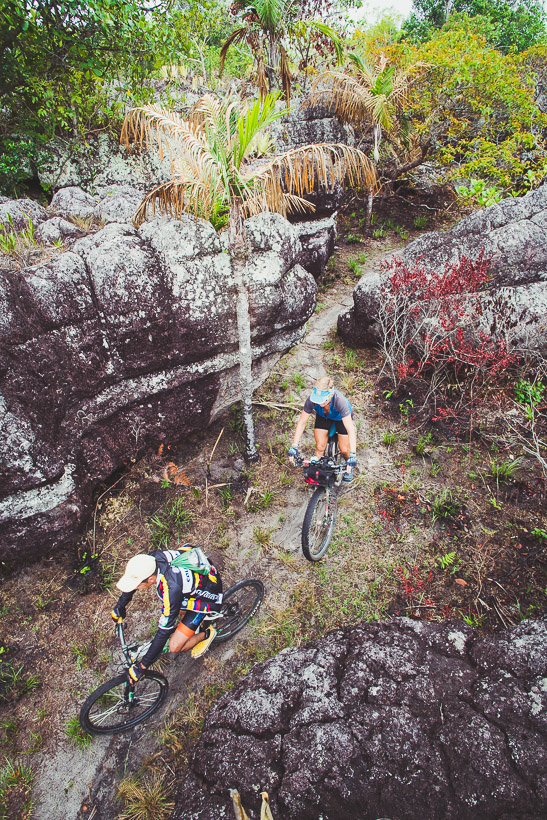







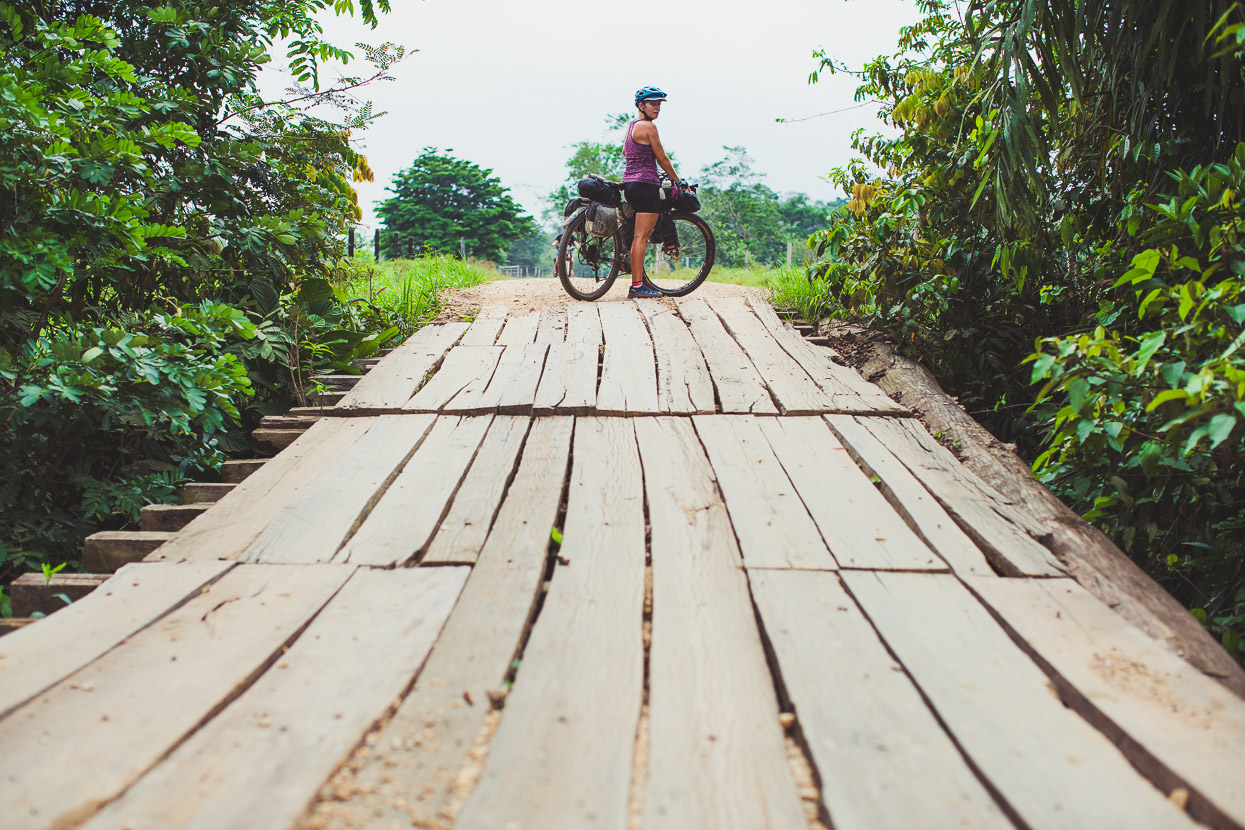

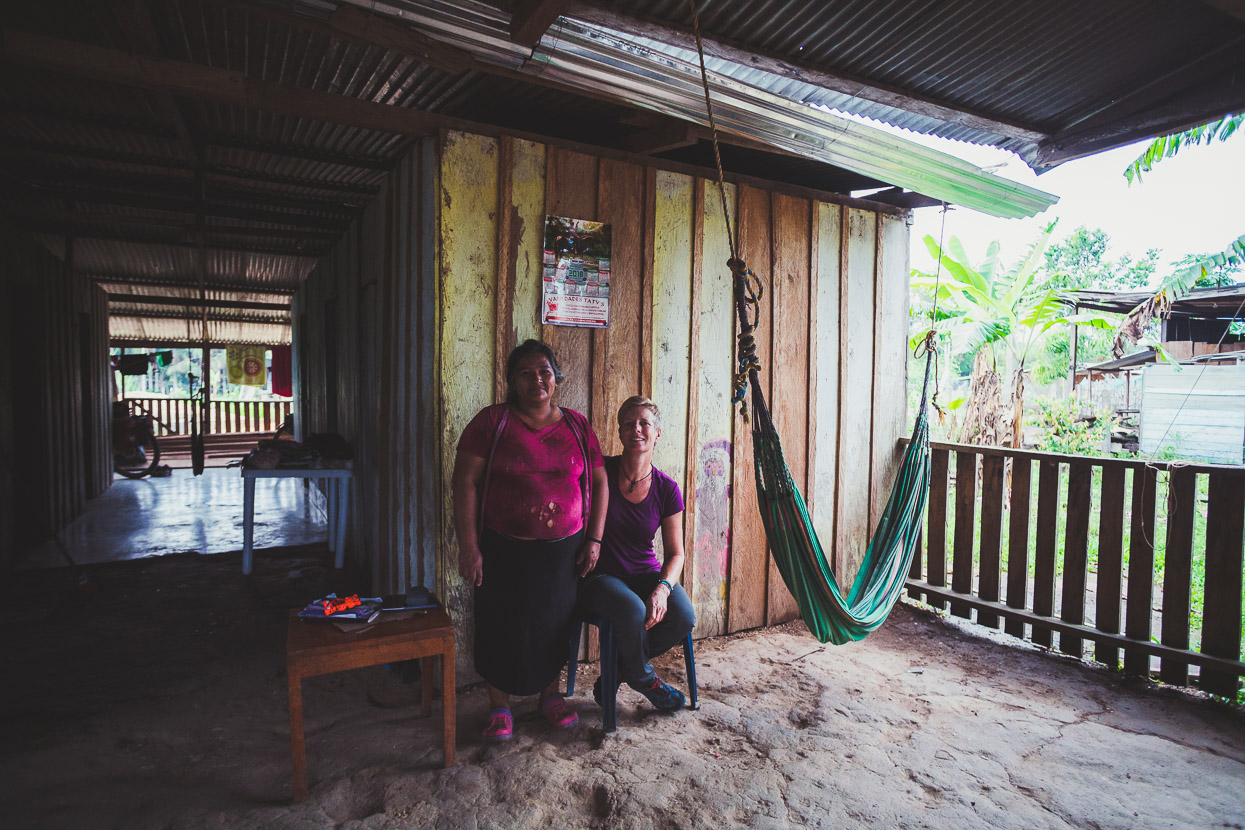
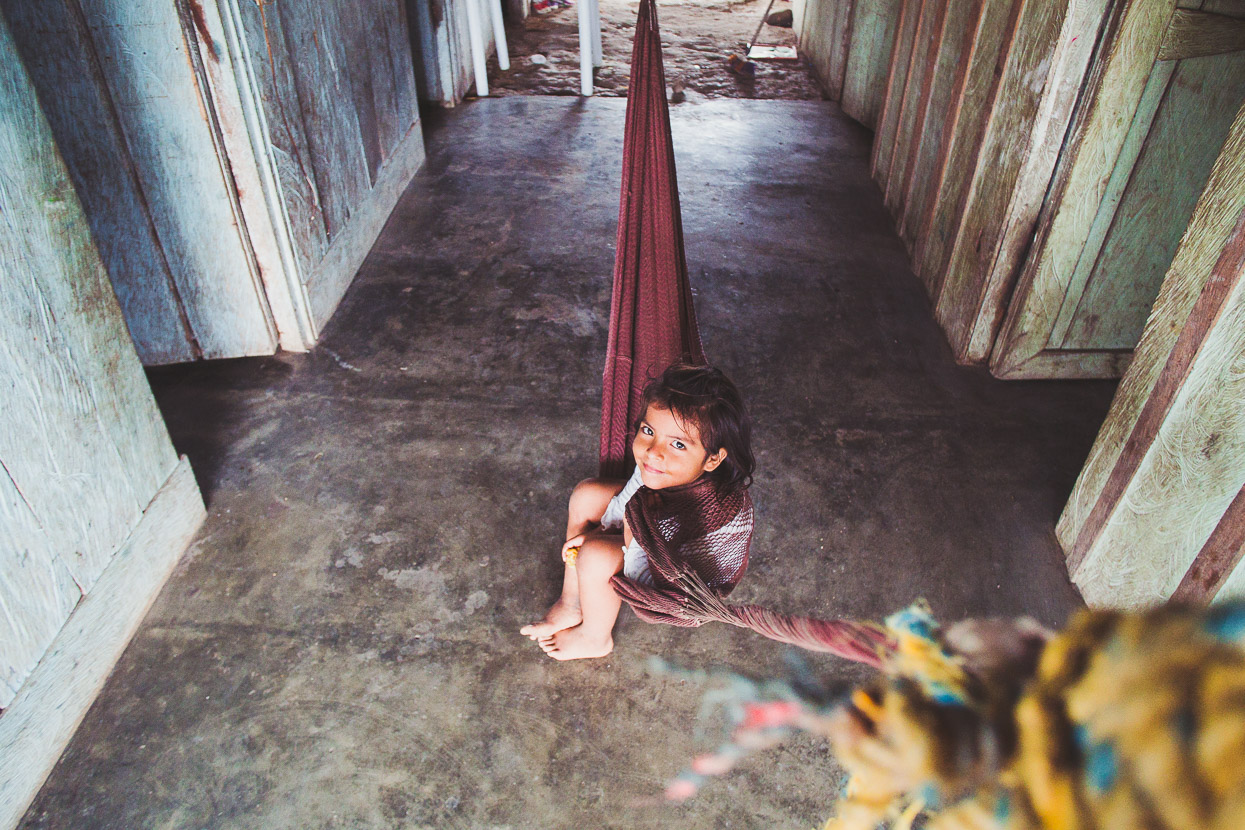
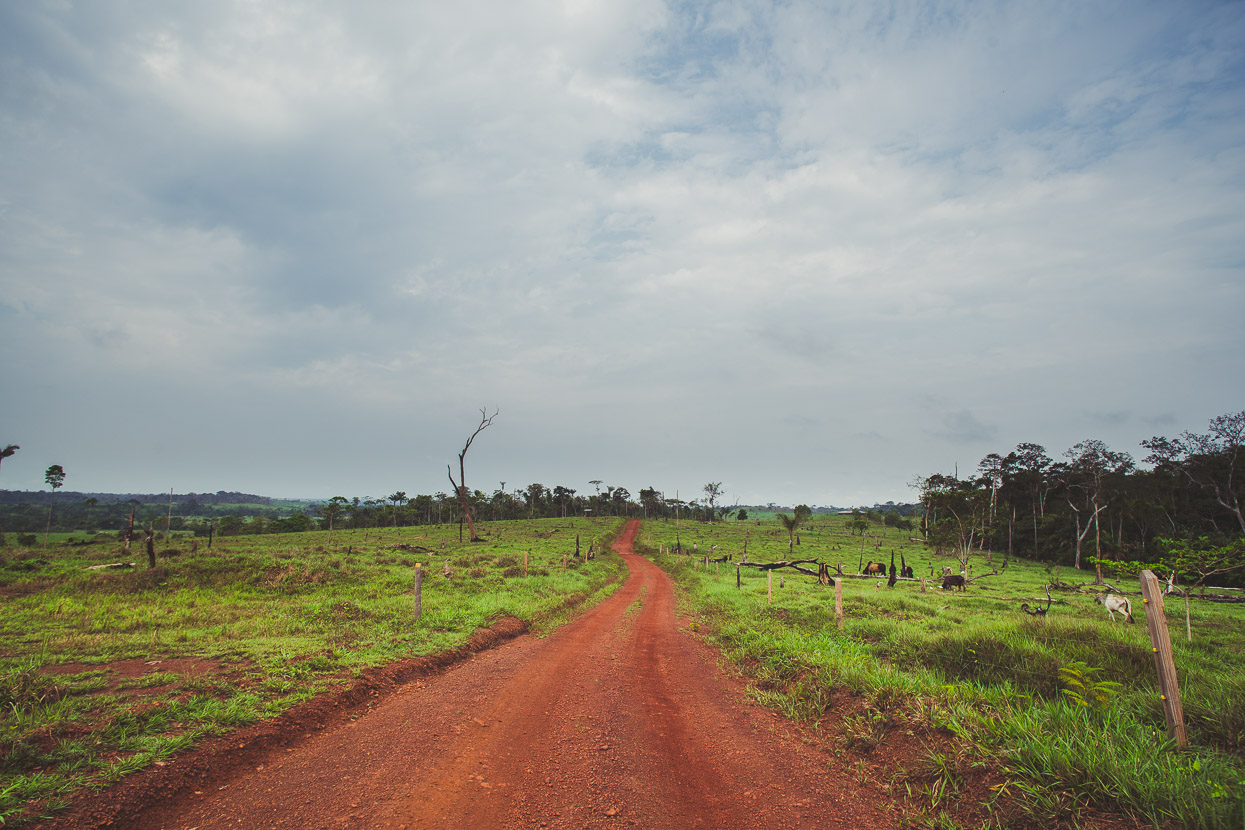



























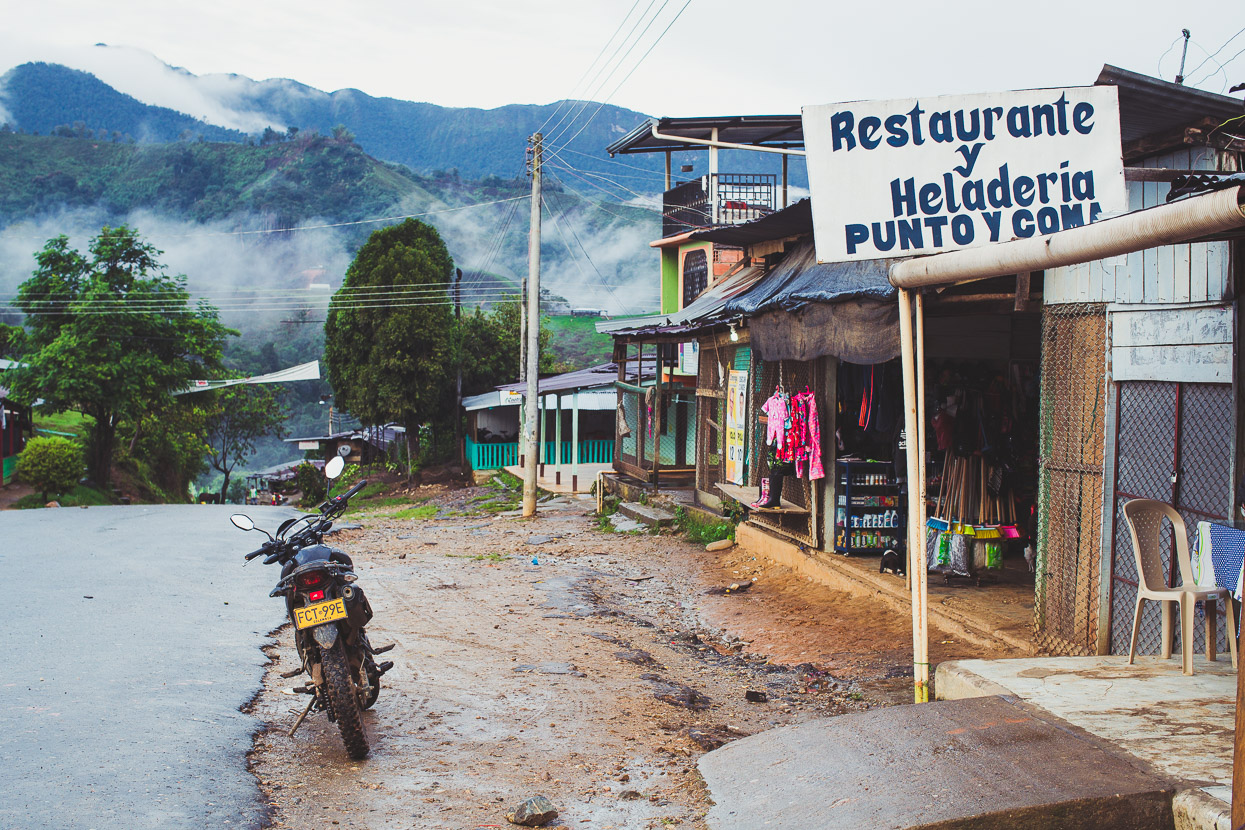

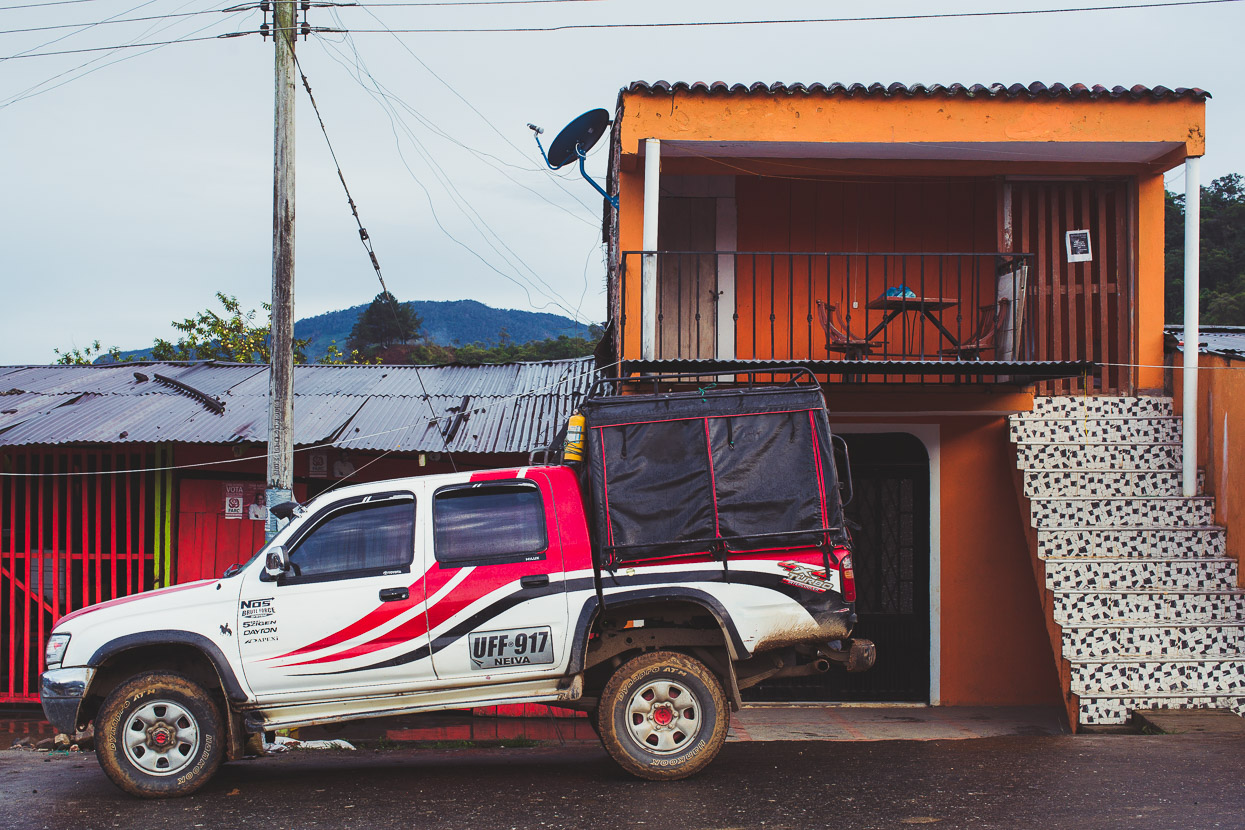







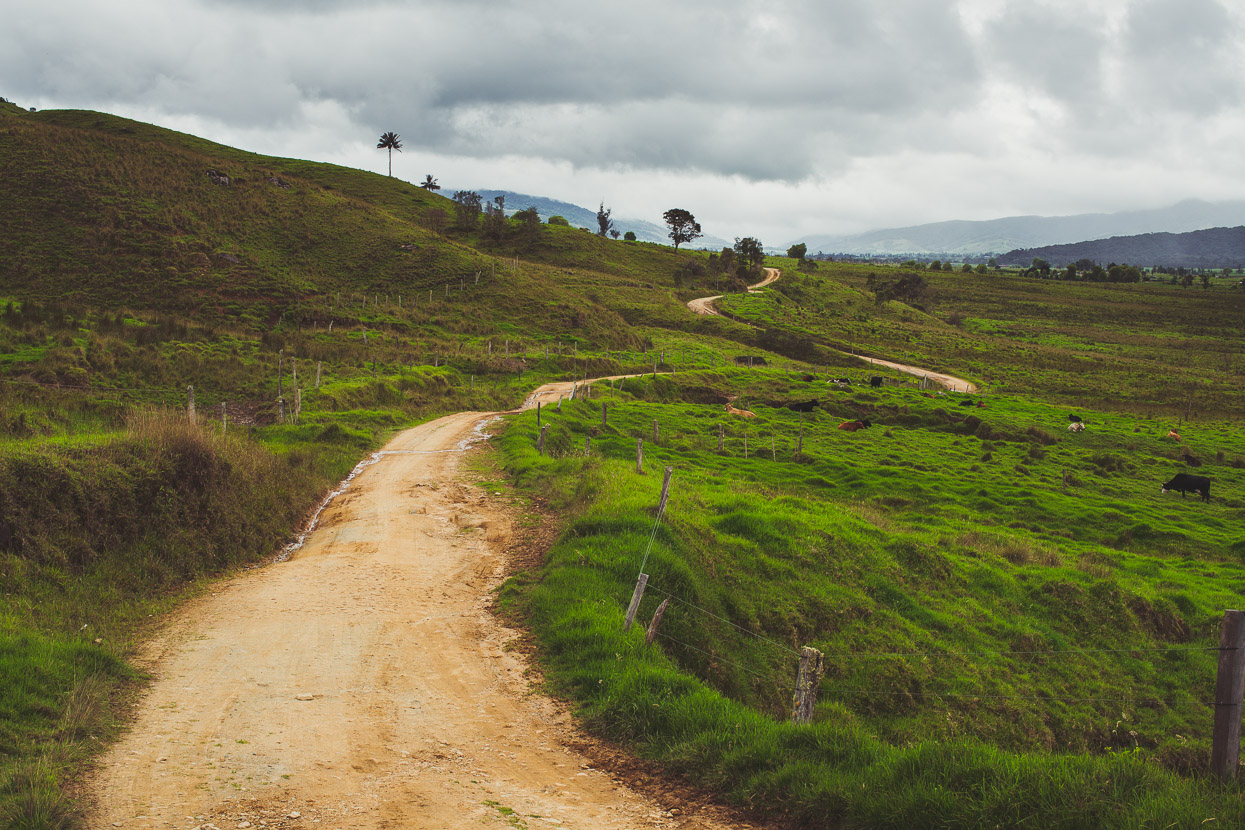



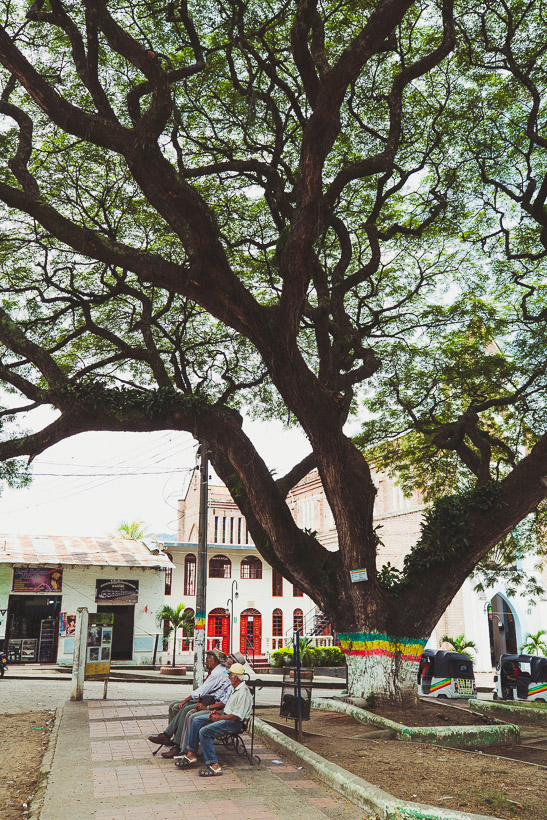
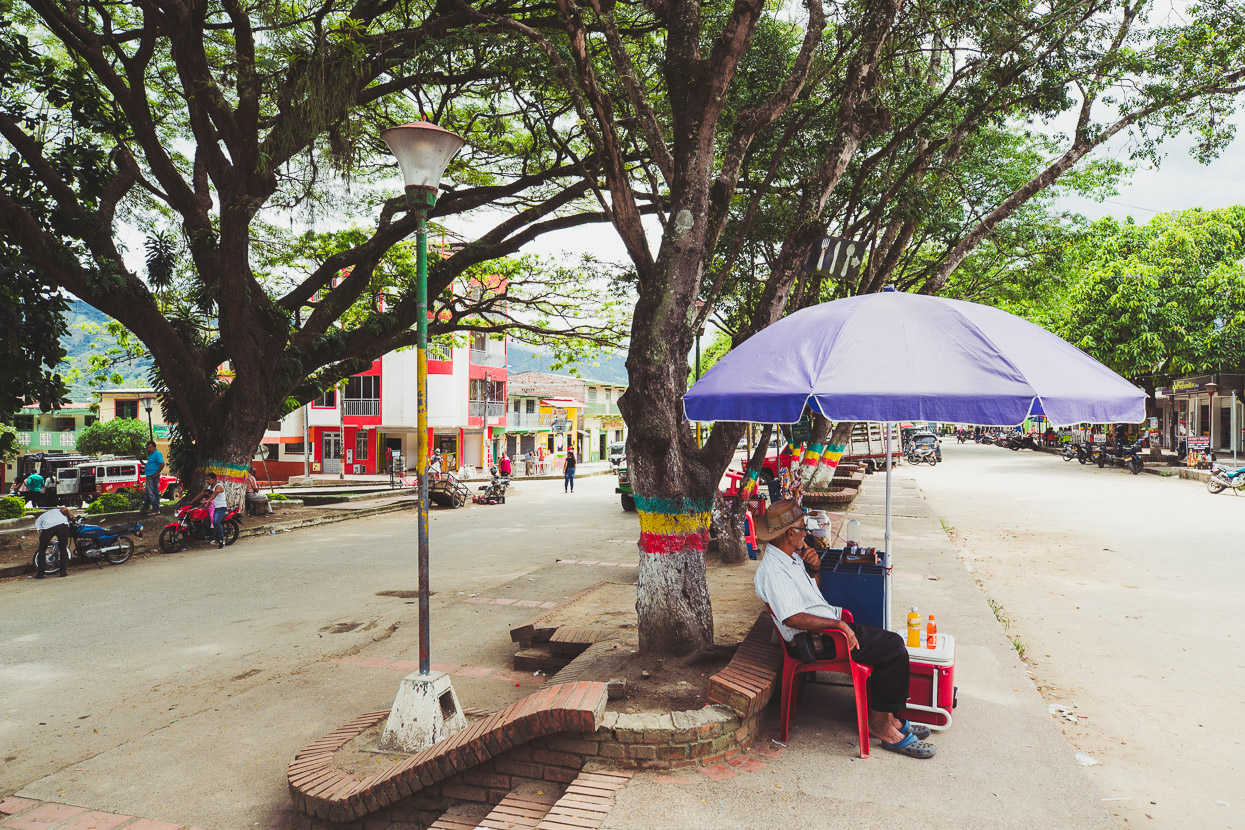





We are so P. C. here, officials from our ‘Health & Safety ‘ regime would have a heart attack ! Truly great you keep so well. Great reading.